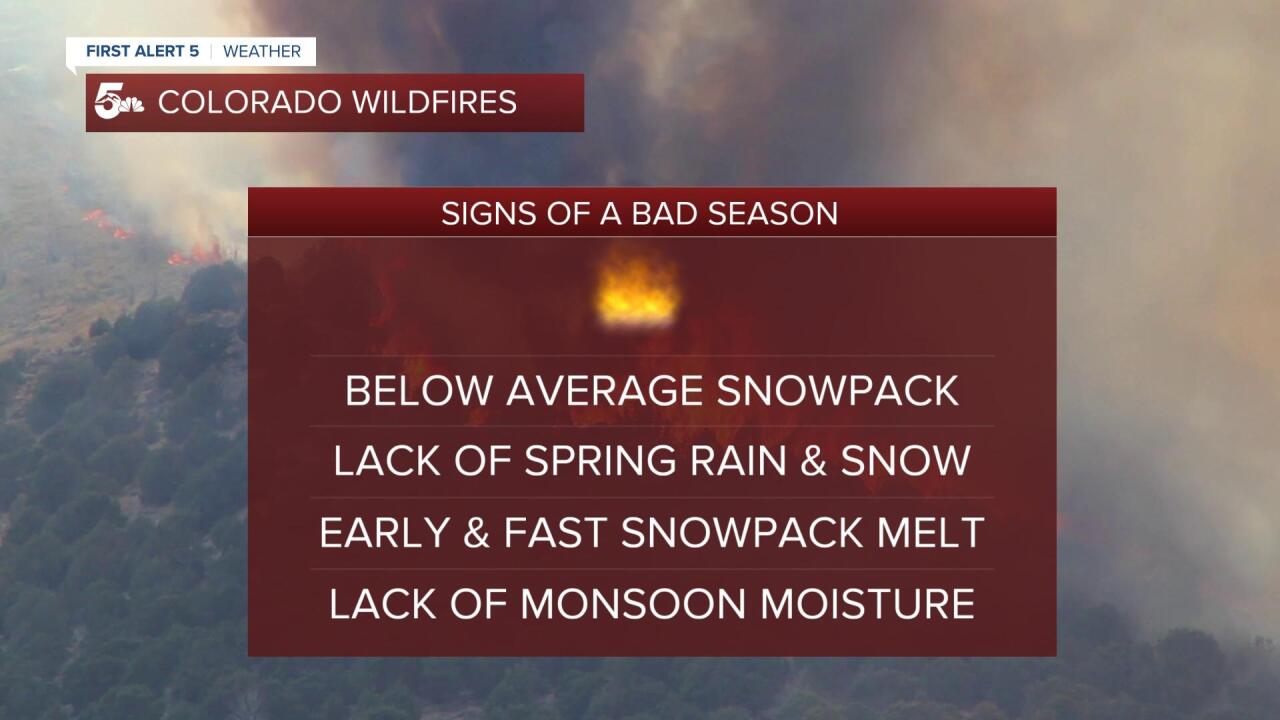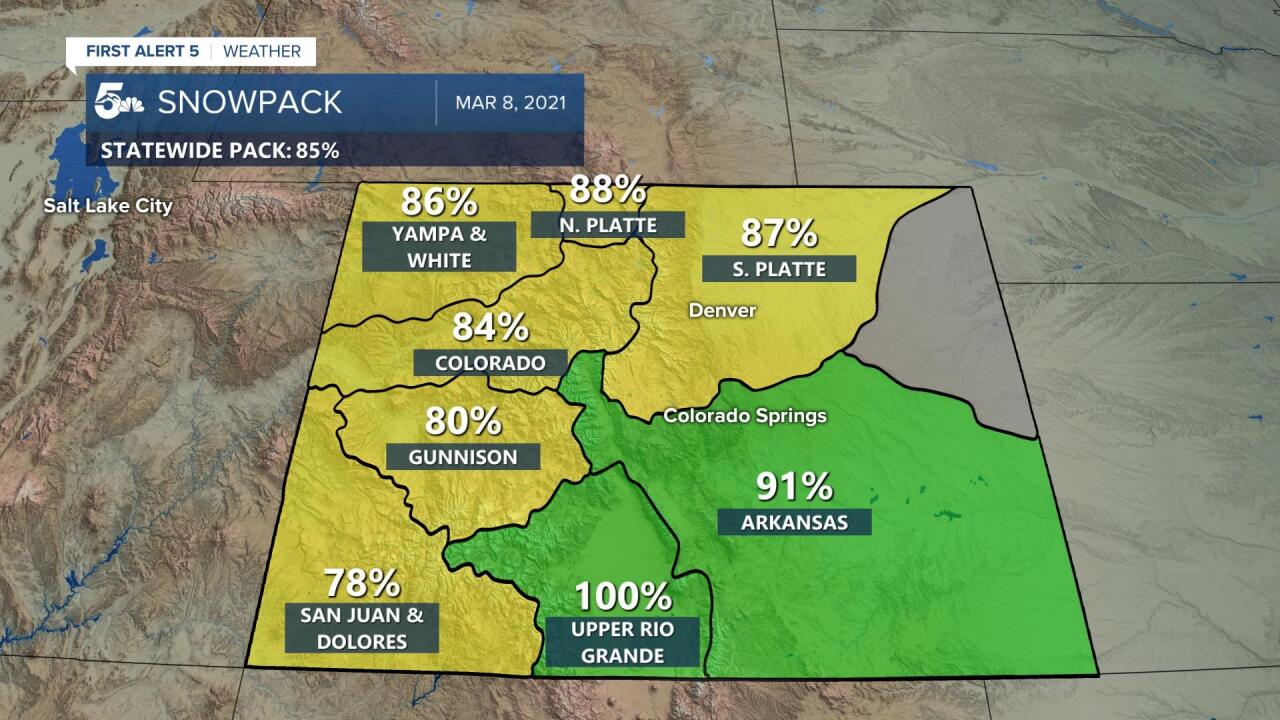2020 was a disastrous year for wildfires, not just in Colorado, but California and Oregon.
Three of the biggest fires in Colorado history, the Cameron Peak, East Troublesome, and Pine Gulch, happened last year.

These three fires collectively burned over 500,000 acres of land from late summer well into the Fall.
In Colorado, there are a few large, telltale signs of a bad fire year.

A below-average snowpack in the mountains will lead to less run-off through the Summer. An early snowmelt can feed wildfire fuels like grass, weeds, and small shrubs.
Infrequent rain and snow in the Spring will dry out the fuels, and push the state into drought.
A lack of summer monsoon rain will only make the situation worse by keeping our fuels dry and further stressing the trees.

In 2020, the only positive wildfire factor was a near-normal snowpack from Winter through Spring.
Unfortunately, very little Spring precipitation and little to no Summer monsoon moisture pushed the state quickly into an extensive drought.

Coming out of winter, nearly half of the state started drought-free in the Spring of 2020.
By July, extreme drought had crept into the southern third of the state, and by October, months after the fires had been raging, 100 percent of the state was experiencing some sort of drought.
The outlook for this Winter and Spring originally wasn't very good, and forecasters across the state have been worried about the potential for another bad wildfire season.

Below normal temperatures along the equator in the Pacific have pushed us into a La Niña pattern.
While not always true, La Niña can lead to below-average snow and warmer than average weather in Colorado.

Back in December, barely had any snow and came in below average for both Colorado Springs and Pueblo.
This was worrisome, as it meant the usual La Niña warm and dry conditions might be verifying at the start of Winter.

Luckily for us, February delivered a few very large snowstorms and actually helped push our seasonal snow above average in both Colorado Springs and Pueblo!
March tends to be the month where we see some of our biggest snow totals, so we're really only one snowstorm away from a higher seasonal snow than what we saw last year!
As happy as we are with February's snow, there are still a few worrying signs for this upcoming wildfire season.

Our snowpack as of March 8th, right at the tail end of April, is below normal in almost every basin through Colorado.

On top of a weak snowpack, the Spring outlook from NOAA show warmer than normal temperatures and below-average precipitation.
Remember, three of the biggest factors in last year's fire season were low Spring precipitation, early snowpack melt, and minimal monsoon moisture.
All we can do is stay fire-conscious through the summer and hope for a few big snows in March and April!


